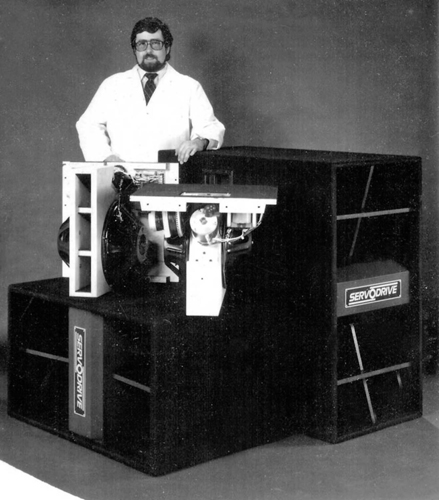
Clandestine Exploration
It was an entirely different invisible force that prompted his lifelong fascination with audio, however – a fascination sparked by his interest in his grandfather’s mono hi-fi and later fueled by a clandestine exploration of the organ loft at the church he attended, where he first encountered “sound you could feel.”
“I used to help my grandfather clean up after services, but sometimes there were more interesting things to do, like exploring.”
Noticing the ladder to the organ loft, Danley asked if he could go up and have a look, but that first exploration was purely recognizance. “Three weeks later I saw the organist come in – she was a little lady that walked real slow, so I was able to sneak into the loft without her seeing me. She started playing and it was like, ‘okay, this is interesting’, but when she hit the pedals I didn’t know whether to run or what. It was just so powerful. That really stuck.”
In the short term, it prompted Danley to learn bass guitar and take regular trips to nearby railway tracks to feel the rumble of passing trains. Long term, it led to the development of the Servodrive subwoofer and ultimately to the creation of products like DSL’s SM Series loudspeakers, Synergy Horn, Tapped Horn and the JH-90 Jericho Horn.
“My father and his brother were inventors,” he continues. “My dad had a workshop, and he got an old motorcycle out of a flooded garage, got it going again and we rode that around the yard. When I was 11, I learned how to arc weld, and I really loved taking things apart.” It was an unusual childhood, he adds, but one that resulted in an insatiable desire to understand how things work and how to make them work more effectively.
Ironically, as passionate as Danley was about that pursuit, he disliked school in general and math in particular. “I took every shop class there was, but I had an attendance problem and math was my weakest thing. I knew how many marbles you could fit in a box car,” he says, laughing, referencing a long ago test question, “and thought what more math do I need than that?”
Doing The Homework
Soon, however, Danley realized that if he wanted to work in audio he needed substantially more knowledge of math and physics. “It was ‘well, you can design a horn if you can do this math’ and that was like, ‘oh no, this is the worst thing’.”
College was never on the menu, he says. “I didn’t think my family could afford it and my grades were so bad it didn’t seem realistic.”
Instead, after high school, he began working at Steamer Sound, a local loudspeaker company started by classmate TC Furlong. Steamer Sound didn’t last, but Danley continued to learn the math and science he’d previously neglected on his own. Still, he found it difficult to sustain a career as a loudspeaker designer financially and often settled for positions as an electronics technician.
Although live sound was only a small part of his career, he points to a gig at a local club, partially owned by Furlong, as a turning point.
“It was the John Burns Band in 1974. I brought my reel to reel and plugged it into the mixer and recorded the full range signal.” Later that night, unable to sleep, he hooked the deck up and listened. “I was floored. It wasn’t album perfect, but it was close.”
What struck him was the huge difference between what he’d heard live and what he’d recorded. The realization that the only possible variable was the loudspeakers would substantially inform his future career and inventions.
Another breakthrough came during a stint at Northbrook, IL-based Data Specialties in 1976 after a co-worker gave him a Commodore Vic-20 computer. Seeing its potential, he immediately set about writing a program that cut down the time it took to do the math that was so integral to his work. “It took weeks to write, but you only had to enter the variables and press return to get an answer. Literally, it brought tears to my eyes.”

